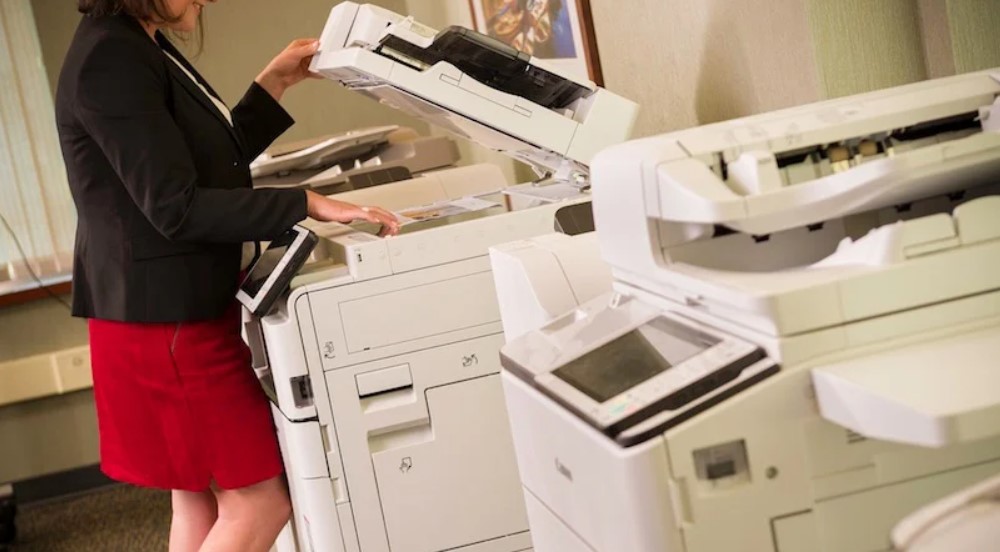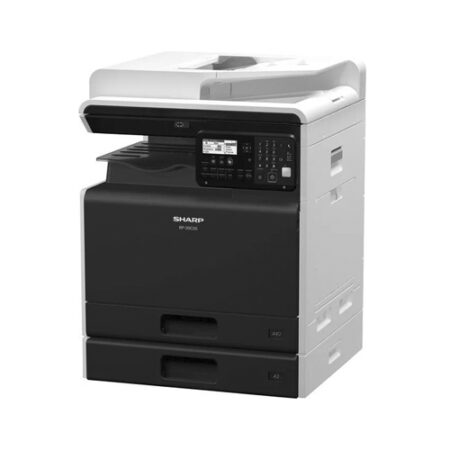The Differences Between a Multifunction Printer and a Standard Copier
Are you undecided about whether you should continue with a copier or upgrade to a multifunction printer?
There’s A difference?
Absolutely! While both the conventional office copier and the multifunction printer are used in the workplace, the terminology used to describe them is not interchangeable. Sure, both are part of a Managed Print platform, they can swiftly make paper copies, and they both require toner. The similarities, however, end there. So, what’s the difference between a multifunction machine and a copier? There are most likely more than you imagined.
1. Function
While a standalone copier can only do one thing (produce copies), a multifunction printer (also known as an MFP) does just that and more. A multifunction printer (MFP) can copy, print, scan, fax, and perform other activities. Older copiers may only be able to print in black and white or in color. It’s normal for an office to have just one machine that can handle both modes. Depending on whatever machine you buy, both have the potential to print high-quality printed items as needed.
2. Speed
Although you won’t notice a difference in short runs, copiers can sometimes print faster than multifunction printers. When making a thousand copies of a single document, the copier may be faster than the multifunction device. The difference in time savings is minor for most people who just need a few copies or even a couple dozen when they print.
3. Ease Of Use
Some multifunction printers were clunky and difficult to use when switching between different modes, such as print and scan, when they initially came out. Multifunction printers have gotten much more user-friendly over time. Modern multifunction printers are constructed with the user experience in mind, and a copy may be generated with a single push of a button, whereas copiers have a number of buttons and settings that can turn every easy copy into an intimidating operation.
4. Widespread Usage
People are increasingly turning away from traditional copiers in favor of multifunction printers because of the number of tasks they can perform. Many office workers rely on multifunction printers (MFPs) to scan printed papers and email them directly to their inboxes, giving them digital PDF versions to keep on file. Copiers are preferable for extended, heavy-duty print tasks that require hundreds or even thousands of copies at once. Today, though, finding a machine that merely makes copies — rather than printing, scanning, emailing, and so on — is quite difficult. The multifunction printer is becoming the standard, thanks to the shift toward digital documentation, green initiatives, and efforts to reduce paper use (and related costs).
5. Cost
Because multifunction printers offer higher capabilities, the price difference between a black-and-white copier and a multifunction printer can easily be thousands of Dhs. Within each of these groups, there are also pricing variances. However, not all of the best office printers are the most expensive. Whatever choice you choose, you’ll most likely have the option to buy it outright or lease it to spread out your payments over time. When it comes to multifunction printers, the most significant price difference is between colour inkjet and colour laser printers, with inkjet printers costing more per Print Due to the high cost of inkjet printer cartridges.
6. Size
Multifunction devices, like most popular technology, have reduced in size as their popularity has grown. While a copier is commonly thought of as a large machine that requires its own room (thus the term “copy room”), multifunction laser printers are often tiny enough to fit on desks and light enough to be moved by one person. The gadget expands in size depending on the amount of paper capacity you desire with either the multifunction printer or the regular copier..

In conclusion
You can better decide your demands after you understand how multifunction printers and regular copiers differ in terms of available functionalities, speed, convenience of use, widespread usage, cost, and size.
Before making any judgments about either Device, think about how it will be used. An ordinary multifunction printer should be enough if you need to make a hundred copies every week. A more modern production printer is likely more appropriate if those copies require criteria such as a high DPI with great colour depth, or if you’re printing thousands of copies every week.
With these considerations in mind, Edison Digital Corporation offers a wide range of Sharp copiers and multifunction printers to meet every need, ensuring an increase in production and workflow at your company.



